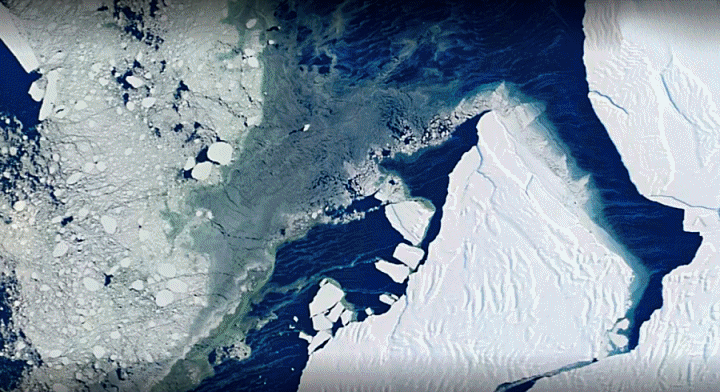THE BIGGEST ICEBERG IN THE WORLD
DETACHED FROM THE ANTARCTIC BANQUISE |
|
Until then, the record for the largest iceberg in the world was held by A-23A, an iceberg of more than 3,300 km². This new block of ice, dubbed A-76, has an area of 4,320 km². The largest iceberg in the world, half the size of Corsica, broke off on Wednesday 19 May from the Ronne sea ice in Antarctica, according to images from a satellite of the European program Copernicus. The huge chunk of ice has since been adrift in the Weddell Sea.
It was originally spotted by the British Antarctic Survey (BAS), a British polar research organization, which has a base nearby. According to the English-language journal LiveScience, this event should not have an impact on sea level, because the pack ice from which A-76 detached was already floating. The U.S. Center for Information in Support of Polar Research (NSIDC) also explained that the continent of Antarctica, which is warming at a faster rate than the rest of the planet, contains enough ice to raise the overall sea level of 60 meters. Its scientists believe that climate change, caused by human activity, had not triggered the detachment of the iceberg, nor that of its predecessor, A-74, which broke away in February. "A-76 and A-74 are part of the natural cycle of the ice floes, from which no large piece has detached in decades, ”said Laura Gerrish, researcher at BAS on Twitter. "It is important to monitor the frequency of iceberg formation, but these [A-76 and A-74] were expected," she also said. Until A-76, the record for the largest iceberg in the world was held by the A-23A, a 3,880 km² iceberg drifting in the Weddell Sea, according to the European Space Agency. | |
| Paul Emison for DayNewsWorld | |
 |
|




